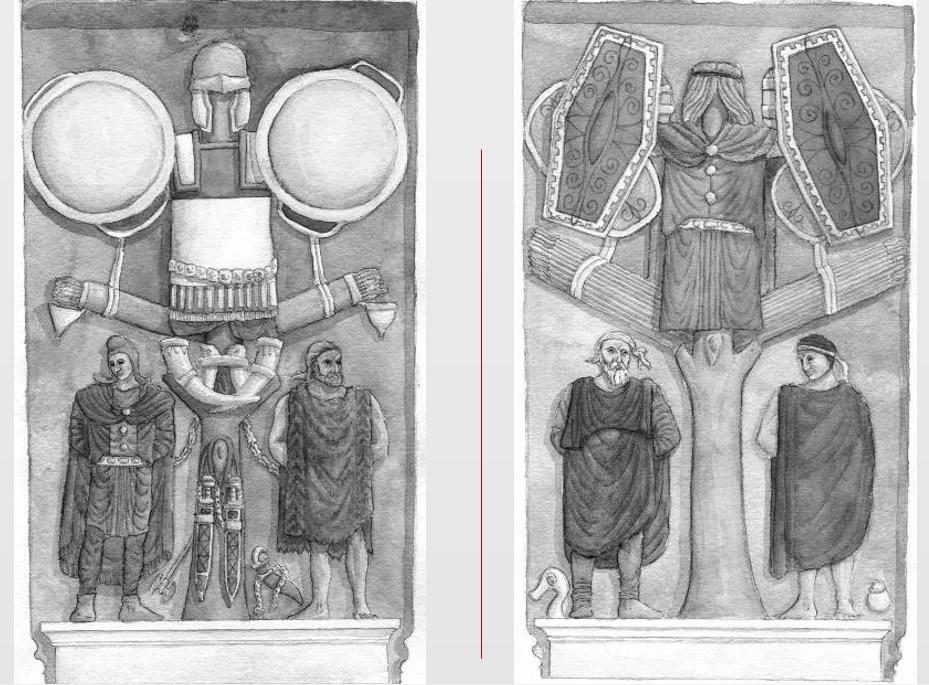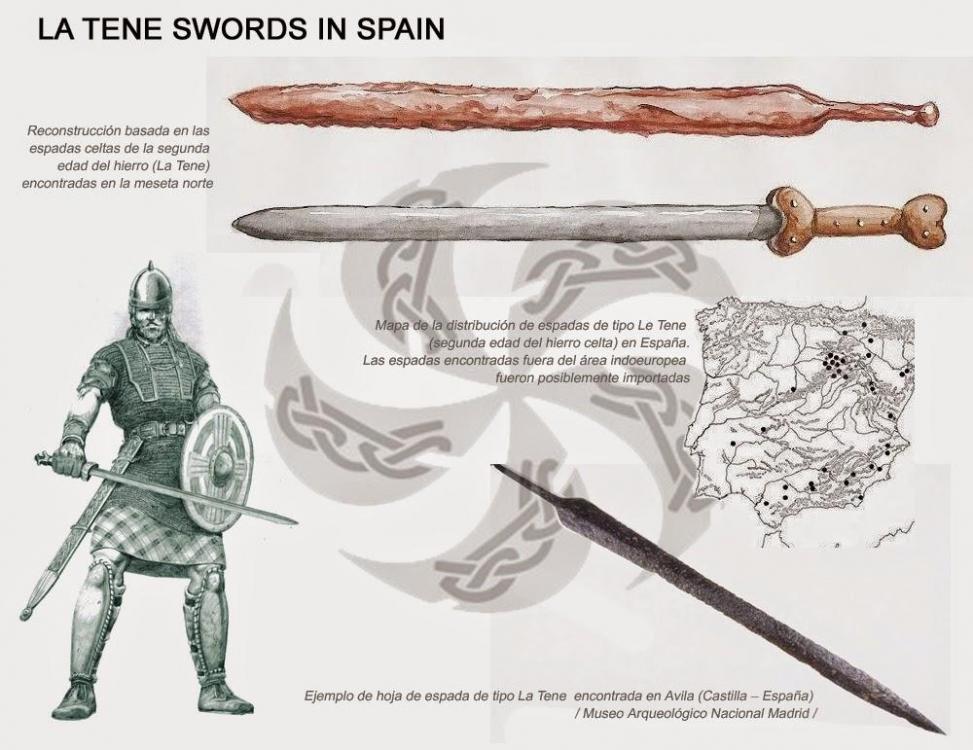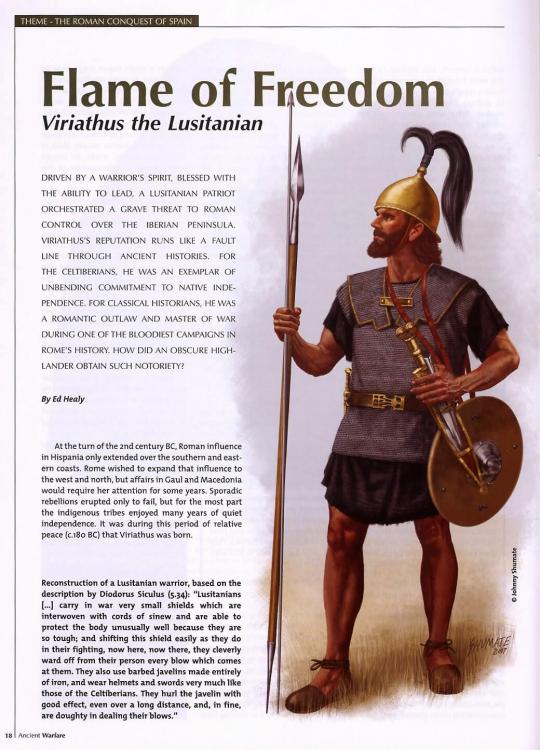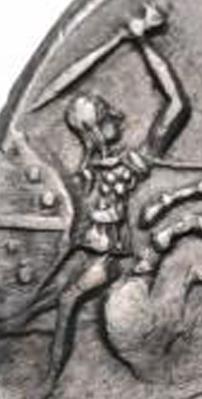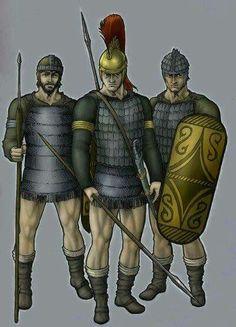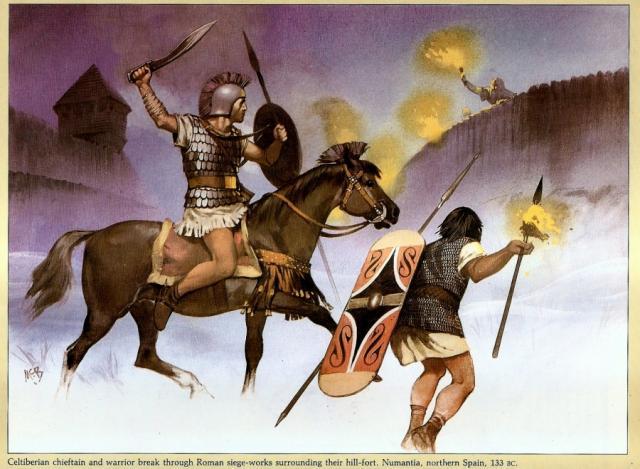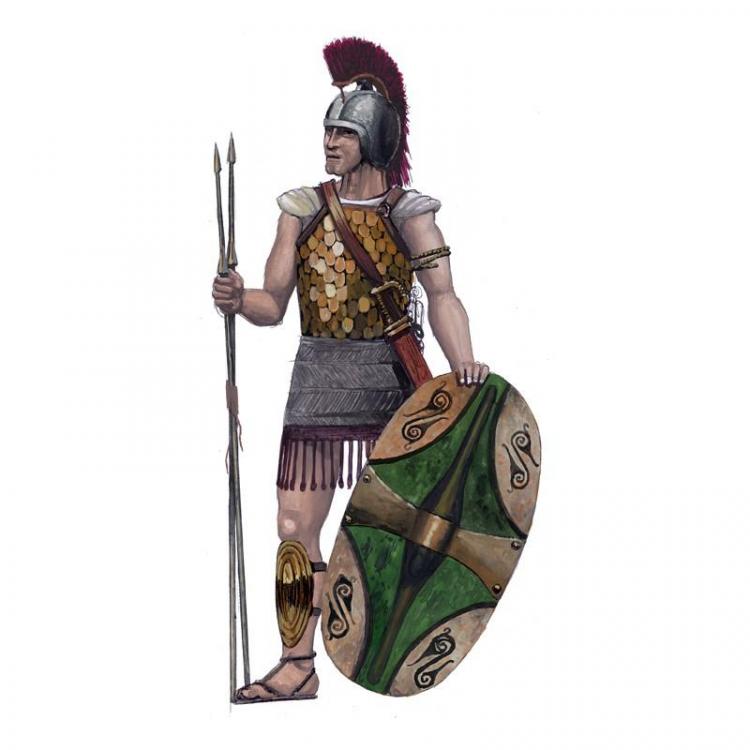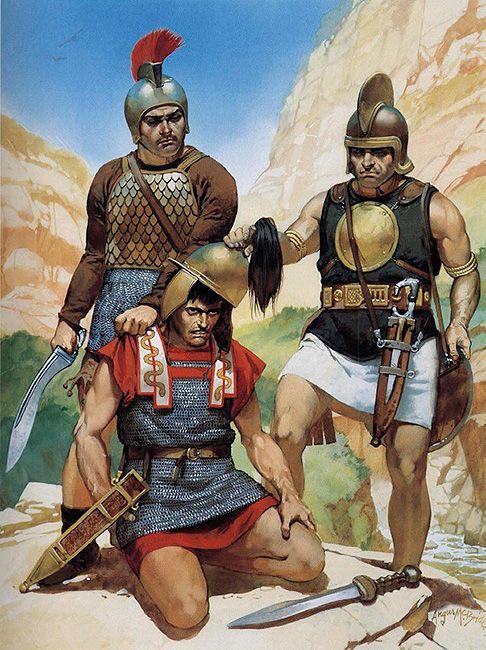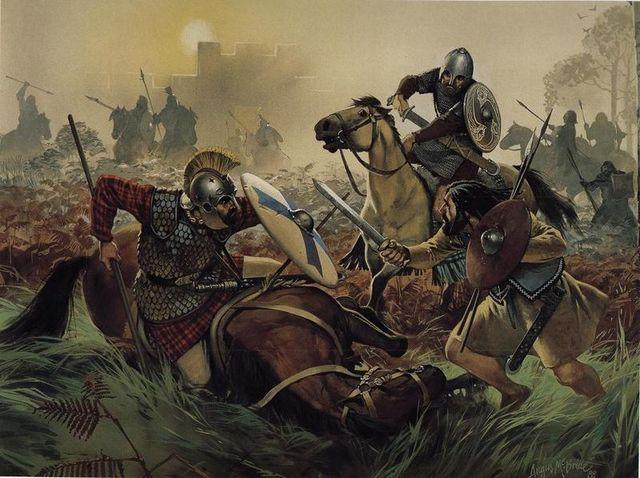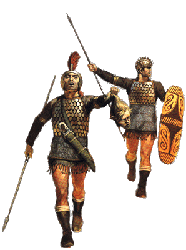-
Posts
64 -
Joined
-
Last visited
-
Days Won
4
Ardworix last won the day on January 14 2021
Ardworix had the most liked content!
Profile Information
-
Gender
Male
Ardworix's Achievements

Discens (2/14)
62
Reputation
-
The troops that attack and use fire dards are from Pompey who had already attacked, previously: The episode of the Lusitanians brothers who desert, comes from these troops of Pompey, of which they even report a speech.... Furthermore, Pompey's troops were not formed exclusively by Turdetans/Béticas... as the episode of the Lusitanians brothers expressly demonstrates. Juan José Sayas Abengochea, at one point, dealing with the composition of Pompey's forces, says: And for a change….again, what has become customary, you misrepresent my points. I said and I repeat that I could use heavy helmets and armor in phase 3....!!!! Which alone would make these units minority, before phase 1 and 2 composed of light troops. From what I see, you are problematic, disruptive, and it seems that your ultimate purpose is to riot to touch your whims. Anyway I just gave suggestions, do as you see fit. We no longer have anything to talk about and I close my participation. Have a good time!
-
From the beginning, the presence of Lusitanians, as mercenaries, has been reported, although it gained greater prominence with Philo's request for help from the Lusitanian Cecilius Niger. Keep trying to cover up your ill will with the heavy army of the Lusitanians.
-
No reason, as always .....! All this ill will, inventing theories, oddities, by the way, to avoid heavy armor by the Lusitanians, when with Sertorius they were frankly used.
-
A quick timeline for being aware... 1. Lusitanian War (155 BC and 146 BC) 2. Campaign of Decimus Iúnius Brutus against the Galaic (138-136 BC) 3. Sertorian War (80 BC 72 BC) 4. Second Civil War of the Republic of Rome, also known as: Civil War Caesarian (49 BC and 45 BC) 5. Cantabrian Wars (29 BC - 19 BC) Buccula and bipenne are registered in the Astur-Cantabrica war, which involved a broad alliance of tribes from the Minho, Portugal to Cantabria. As well as this period, the design of the caetras that was listed for being printed in the Lusitanian faction is from this period. In other words... a period on the threshold that the game is about. The use of flaming darts, which currently figure in the Iberian faction, are recorded in the course of the Cesarean Civil War that took place in Hispania, and whose protagonists, once again, are the Lusitanians. before the Cantabrian War. And the period of the War of Sertorius, prior to these retro-cited events, which was greater in magnitude than that of Viriato, and in which all military resources were fully developed, including naval battles... will it pass unnoticed? If with Viriato the infantry and heavy cavalry were few, still, surely there should be an amount to make its existence possible, with Sertorius it is widely employed.
-
O ARMAMENTO DOS LUSITANOS NAS CAMPANHAS DE VIRIATO - Miguel Sanches de Baêna Caderno 9 - Terras Quentes - Exército (doczz.com.br) pg. 44 - 109 of PDF. Write an article saying this to Blázquez... that he is mixing Iberians, Celtiberians and Lusitanians.....
-
You like to distort as it suits you.... Strabo's quote rejects the fallacy that heavy armor would be almost non-existent. If that were the case, there would be no heavy army as Strabon expressly reports about the Lusitanians. This "expert", to justify the obvious representation of the squamat loric on the Sant Miguel vases, suggests laughable "cloth armor". No surprise, I've seen "experts" interpret the heads of wolves that figure on the breastplate as "lion". Still on the various representations in ceramics, they are reputedly considered Celtiberian and Lusitanians: On the other hand, I quoted former Portuguese diplomat Miguel Sanches Baêma, a specialist in Military History, and who, more than a historian and interpreter, reproduced the weaponry with the techniques of the time. But what counts is his opinion. And the innovations that come in your mind.
-
Now, squamat loric is not plausible because you don't want to...
-
The images are merely illustrative regarding the use of the buccula and the bipene (the ones I posted, not yours).... unless you also want to make a case for the use of both, as to date, there has not been a single physical archaeological find of the two pieces.
-
Ciertamente, pero en un número que permite la formación de un ejército pesado (infantería y caballería), de lo contrario, el historial de Estrabón no tendría sentido, si fuera como algunos afirman "casi inexistente" ....... "También celebran concursos, para soldados y caballería con armas ligeras y pesadas, de boxeo, carreras, escaramuzas y combates por escuadrones". - Strabon. De modo que, apareciendo en la fase 3, ya serían pocos por sí mismos, constituyendo una mayoría (derivada de las fases 1 y 2) tropas ligeras, reproduciendo fielmente las fuentes clásicas. Permítanme reproducir una exégesis, del ex diplomático portugués Miguel Sanches Baêma, especialista en Historia Militar, que corrobora algunos puntos ya planteados, a continuación en portugués, creo que comprenda: En cuanto a las pezuñas, creo que en la fase 1 se podrían ir sin pezuñas, usando el vendaje alrededor de la frente y el cabello, como se representa actualmente en algunos honderos de la civilización ibérica, en la fase 2 creo que se podrían usar pezuñas de cuero y que hay varios modelos, en la fase 3, como ya he comentado, creo que se podrían usar cascos de bronce (montifortinos y calcidicos) aunque también se podrían mezclar con los de cuero si le place. En cuanto al atuendo de infantería o caballería ligera, sugeriría la reproducción del traje de un preso gallego representado en el Arco Romano de Carpentras, sur de Francia: La figura en cuestión es la de la derecha, con un casco de Montifortino colgando arriba y una falcata a sus pies. (ver: http://www.manuelgago.org/blog/2017/12/11/o-guerreiro-perdido/) En cuanto a máscaras y bipenes, se hace referencia a las monedas que conmemoran la victoria romana en la guerra cántabra, en época de Augusto, además de las reproducciones artísticas de la historia militar:
-
I believe that I was the one who made the most references here, an unfair accusation. I'm not the one with innovations, those, yes, that become a mess...
-
Read the beginning of the topic.... the Iberian peninsula is divided into three areas, the Iberian properly (Mediterranean coast), the Celtiberic, and the Celtic. The Lusitanians are included in the Celtic. And the classic authors, make reference that the Celtiberians and Lusitanian used the same weapons. The current Iberian civilization, mixes the three, the buildings are Celtiberian, and mix Celtiberian and Iberian units.... Lusitanian, there are only the darts. Still, somewhat characterless. The current Iberian civilization is defensive, possibly inspired by the Roman siege of Numantia. This was not the war tactic of the Lusitanians, who were notable for their warrior nomadism. In addition, as I said, the major war events that took place in the Iberian Peninsula, BC, were carried out by the Lusitanians with Viriato and Sertório. And once again, I think it would be a huge gap, not being Sertorio among the Lusitanians, it would be a natural evolution in the Lusitanian game mode. As for scale armor, I have repeatedly cited liria pottery, as well as Strabon's express mention of the use of heavy army by the Lusitanians. And once again, I don't know why the surprise, the previous versions itself, and I'm mistaken, the current one also correlates scale armor. Now... if you have new theses about it, as I said, write a scientific article and defend it academically. Untimely to weave innovations here.
-
Las unidades de infantería, con sus subdivisiones: espadachines, piqueros y dardos, en su fase 3 creo que ya podían hacer uso de cascos de bronce (montifortinos y calcidico), además de cota de malla y armaduras de escamas. Las unidades actuales de los Ibericos, en el modo actual 25, en su tercera fase ya hacen uso del casco calcídico, y en el modo de los juegos anteriores 24, 23, etc ... la infantería piquera ya hizo uso de armadura escalada . En la fase 2, podría utilizar armadura de linotórax, con cascos de cuero. Recuerdo que los modos anteriores 24, 23 ... tenían una buena variedad de cascos de cuero. A menos que me equivoque, la infantería espadachín actual, en su fase 3, todavía usa casco de cuero. En la fase 1, infantería, ropa ligera. En cuanto a las Unidades Campeones, podían utilizar completamente la armadura pesada, incluido el uso de bucculas (máscaras). Especialmente en caballería. Además del uso de bucculas, el uso de bipene (hacha de doble filo). Creo que también sería interesante hacer uso de la espada tipo "la tene" (espada larga/lejos), plenamente documentada arqueológicamente, por la infantería en general, además de las tradicionales gladius hispaniensis y falcatas. La espada de la tene, ya tiene en los Britones, basta agregar. Recuerda también que las capas no solo estaban hechas de pelo de cabra, sino también de lana. Hay capas negras en otras unidades del juego ya hechas, sería suficiente agregar.
-
Specifically regarding the coin, you convinced me to be a Thracian, the sword really seems to me to be of Thracian origin and not a gladius hispaniensis as I said. Anyway, we have a "barbarian" dressed in a 127 BC loric squamata. Which corroborates the heart of all this quarrel, the loric predates the Romans. Yet this point is a paltry mention of how many others have already been made and ignored.... And back to the main point, almost celtic people have a registered of the use of loric squamata, but according to the article you cover, the Lusitanians and Celtiberics do not! Making assertions bluntly contrary to classical authors. In addition to the express representation in Celtiberian ceramics... and therefore widely represented in the historical portrayals of Celtiberian and Lusitanian warriors. I don't understand why polemic about this.
-
A "thracian", which makes use of a gladius hispaniensis... it's an evolution, for those who said there was no barbarian. "Roman" auxiliary troops in Britannia were essentially "Iberian". It is not by chance that they used lSquamat loric, as the use of will be repeated in all events after the incorporation of "Iberian" bodies into the Roman army. Lusitanians and Celtiberians, like the Cantabrians, Galaics, etc... used the same weapons... The thesis that you encompass as almost non-existent the use of mail coat.... however, once again, Estrabon mentions the use by Lusitanians of both light and heavy armed: "You really think the bottom part is a chain mail?" The upper part yes, without a shadow of a doubt.... and I repeat what I said initially, I'm not the one with innovations, if not you. Nothing I have exposed here is new. So much so that they are reproduced by all those who portrayed the Lusitanians and Celtiberians.
-
Your own reference says "it is in any case clear"..... the other coins feature other representations that are not Roman either, or at least not just roman, as you yourself mention. As for not seeing, or ignoring, the figure of a "barbarian" in the representation on the left, we see that someone has problems with their eyes.... of all sorts, even if they ignore everything that has already been said, specifically about the currency in question . Liria's ceramics are even clearer. Although, in all tribes of Celtic origin, scale armor is registered, but in the Celtiberians and Lusitanians they are not.... they are some kind of cloth armor. The reference you make: It expressly contradicts Estrabon, as I've already said, but you completely ignore it. Between Estrabon and these "exotic" theses, to say the least, I take Estrabon. or.... let's figure the Celtiberians and Lusitanians no longer with lorica squamatas, but with some kind of cloth armor... !


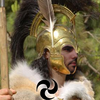
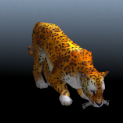

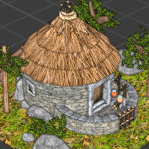
.thumb.jpg.b21ca1d0c15fb56b42c39b25a0a40815.jpg)



